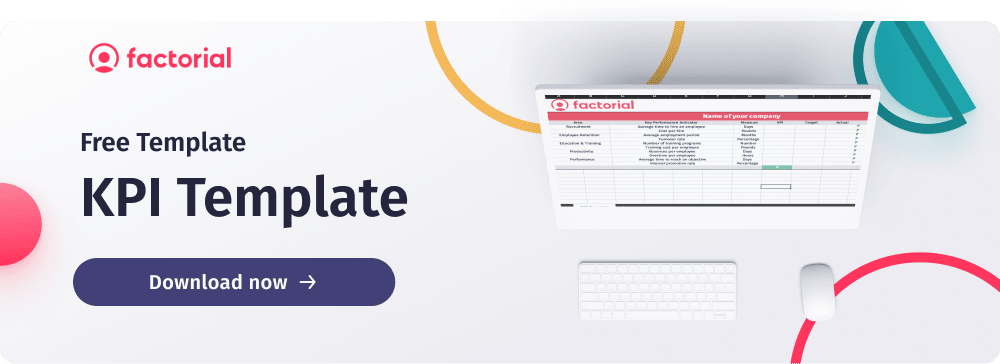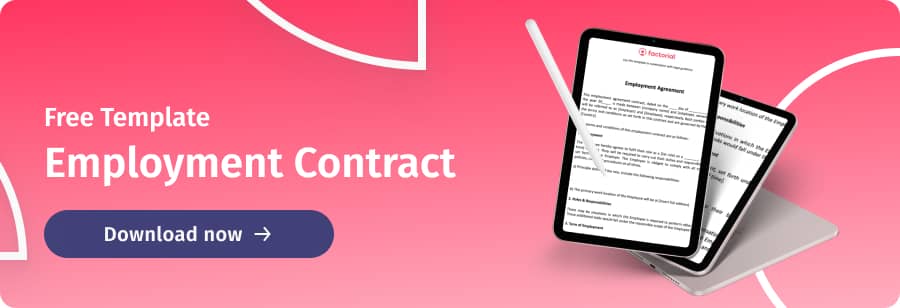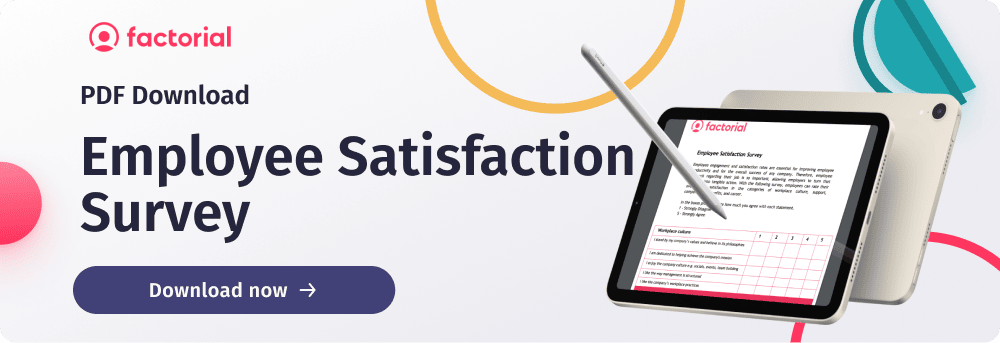It is very common to speak of KPIs in marketing and sales, but HR KPIs are not something that’s spoken about often. However, people managers of the future are increasingly using these indicators in their day-to-day work. HR KPIs are vital for companies to understand ways to increase employee engagement and productivity. In order to measure their success, they must establish clear goals to achieve.
In this article, we are going to be talking about the 10 key indicators that are used for monitoring HR management in your company. As well as analysing the role KPIs have for HR departments.
 Download your free KPI Template to get started
Download your free KPI Template to get started
What Does KPI Mean?
A Key Performance Indicator (KPI) is a metric that measures the performance of a particular activity or process. The objective of a KPI for HR is to analyse the success rate of a project on the basis of the objective you want to achieve. Therefore, the KPI serves as a reference for defining whether a company has accomplished its goal. This process facilitates the company in making more astute business decisions.
Example: open rate of your newsletter: The % of individuals who open your newsletter will determine the relevance and quality of the content that you sent. Monitoring the open rate of each newsletter you send can help you evaluate the effectiveness of your posts depending on the goal you want to achieve.
Characteristics of KPI
- Concrete: The KPI should be tangible and it should have a specific goal.
- Measurable: If you cannot measure the KPI, it isn’t a KPI.
- Reachable: Stay realistic when defining a KPI that will determine your success.
- Relevant: Monitor only the things that really matter, don’t waste time with indicators that do not contribute anything to your company.
What is a KPI Report?
Nowadays, more organisations are unintentionally producing huge amounts of data. Some of this data proves crucial for business success. Therefore, the analysis of this data to measure productivity, notice certain trends or identify what the business needs to do to improve, is really important.
However, at the same time, it’s possible that some of the data will be unuseful and irrelevant for businesses, due to being collected automatically without serving much of a purpose.
KPI reports help present a visual representation of data, making it easier and quicker to analyse, instead of searching through loads of sheets of paper that can easily get lost.
Factorial’s free HR software includes reports and analytics features, so all your reports are located in one place. This means all your data is summarised and you can manage information at your fingertips, speeding up the process and refining data collection.
What is HR KPI?
Human Resources Key Performance Indicators (HR KPIs) are systems used to measure how HR is aiding and contributing to the success of an organisation. HR KPIs analyse how efficient a company’s HR team is in accomplishing its HR strategy.
An organisation’s HR strategy is defined based on the HR outcomes needed to accomplish the company’s business goals. Establishing HR KPIs is essential in order to achieve the best return from a company’s human capital. HR KPIs also prove indispensable to meeting the key objectives of the HR department.
10 Most Important HR KPI Examples
1. Retention of talent
Retention of talent is a KPI that indicates the job stability of a company. This allows you to learn about the average employee retention rate in the company. It is also linked to other factors such as the remuneration rate or the labour climate. In addition to the cost of losing an employee, the loss of talent will force you to spend time and money to recruit a new individual.
An index of high staff turnover implies high costs for the employer. The rate of talent retention is calculated by comparing the number of workers who joined the company in a specific period vs. those who stayed during the same period.
2. Duration in the position
Many employee losses are closely related to the time that they keep in the same position. If they feel they won’t be promoted, many employees tend to look for new opportunities outside of the company.
You can calculate the average time it takes for an employee to ascend by counting the number of months it takes each employee with the same charge and dividing the result by the total number of employees in the company.
3. Dismissal rate
The dismissal rate is affected by 2 principal factors: terminations conducted by either the employee or employer. This can be affected by other factors including the type of employment contract, resignations due to an incapacity to work or retirements. If there is a high level of terminations by employees, then an internal analysis of employee satisfaction rates needs to be undertaken.
Additionally, if involuntary terminations occur for other reasons than layoffs, such as poor performance or misconduct, then it will cost the company a lot of time and money to replace that employee. Therefore, the analysis of this KPI is important.
4. Absenteeism
Measure the absence rate of employees due to delays, sick leave or excused or unexcused absences. This indicator can help predict the numbers you could be expecting. Based on the average value of the hours worked, the impact of absenteeism on the company’s costs can be quantified.
5. Average time for recruitment
Average time for recruitment measures the time between the announcement of an employee who is leaving the company and when another candidate is chosen and selected to replace him. It is possible to optimise the average time of each new hire but be careful, many factors may be included here.
6. Education and training
Courses for employees have a direct impact on the company’s activity. This HR KPI helps in boosting the productivity levels of each employee. It does this by creating specific strategies to increase the loyalty and satisfaction levels that employees feel when working with the company.
7. Cost per hire
This HR KPI measures the number of resources invested in each employee. It includes the costs associated with recruitment, such as advertising positions, and the time cost of reviewing and choosing CVs and conducting interviews. All the way through to the cost of training; the cost of manager training, an external trainer hired, and the materials used.
This can take up a significant part of the company budget. However, it is an incredibly important part of any company’s success, as without talented dedicated employees businesses cannot function properly let alone succeed. Therefore, investment in talent acquisition is key.
8. Employee productivity
This KPI is going to measure the efficiency of your workforce. It analyses how long it takes for employees to accomplish certain tasks and goals that have been set for their position in the company. Essentially, it analyses how much work employees have been undertaking and how well they performed these tasks.
For a deep analysis of employee productivity, components affecting employees’ productive output must be considered. This includes the time employees spent working, their performance or the quantity of product produced, and the quality of the product delivered. Employee productivity data can be used as a reference to adjust and develop the ways employees are working.
9. Accidents in the workplace
Being able to measure the number of accidents in the workplace is going to be extremely important and useful in order to avoid future issues.
10. Employee satisfaction
This is a very important HR KPI that should not be neglected especially due to the ‘war for talents’. Employee satisfaction is dependent on a range of factors beyond just financial benefits. These include a positive work-life balance, remote working and flexible working options, non-monetary benefits such as gym membership discounts as well as a sustainable and social company culture.
Companies can measure talent satisfaction through employee satisfaction surveys, which should be conducted on a regular basis to make sure all employees’ needs are being met and any issues or concerns they have are being addressed. Download Factorial’s free employee satisfaction survey to measure how happy employees are feeling in their job. This is important as the happier the employee, the better the quality of the work they produce.
Software to Track HR KPIs
Do you need HR software to help you save time on your tasks? Or software to track your KPIs? Factorial’s human resources reports and analytics feature generates personalised reports from data stored on your Factorial account and our HR and analytics panel creates a customised space to manage all the reports. Also included are our automatically generated organisational chart and our time-off reports, enabling you to track your employees’ annual leave.
You can also manage your company’s time and attendance data. You can do this by creating personalised reports regarding your employees time tracking, enabling you to make better decisions. All the while Factorial can guarantee that your data will always be protected. This is thanks to a powerful encryption system and single access for each user.



